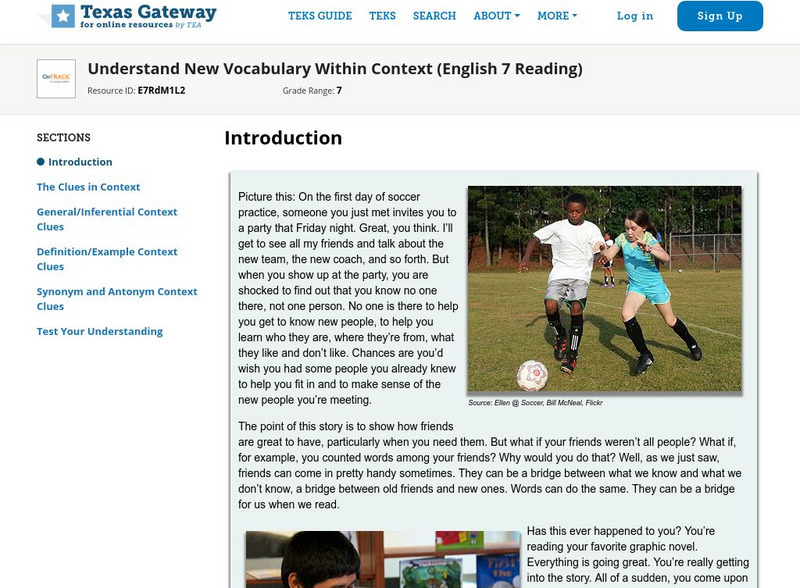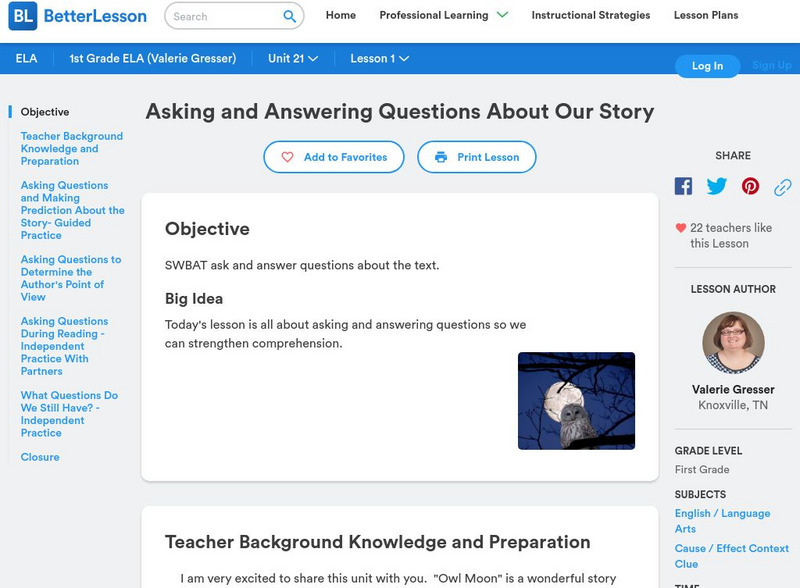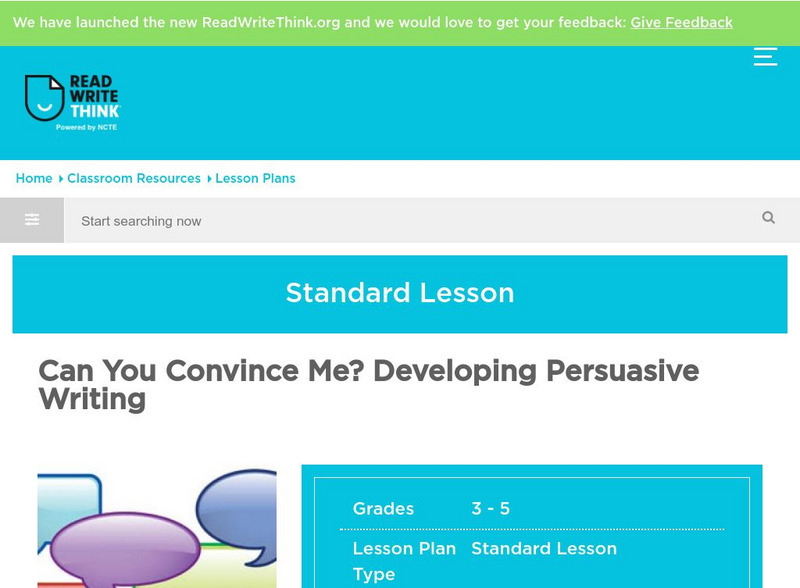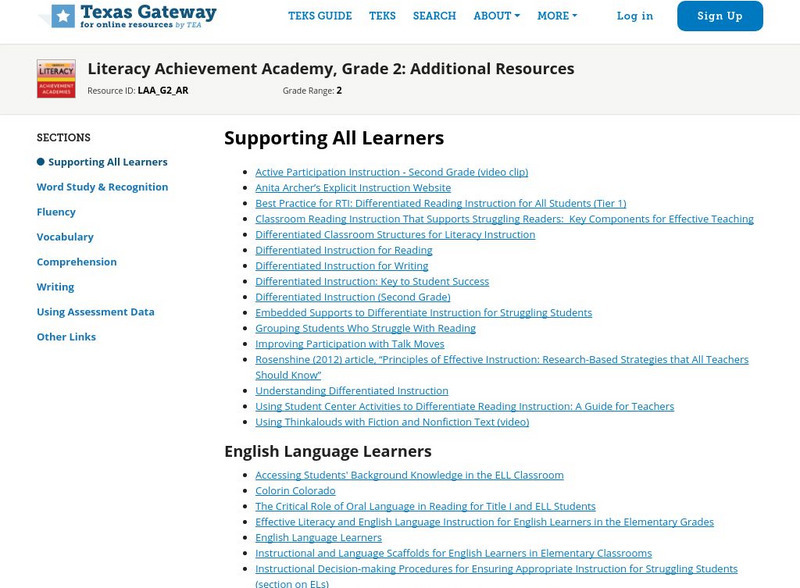Hi, what do you want to do?
ReadWriteThink
Read Write Think: Scaffolding Summarization With Fishbone Mapping
Lesson that teaches learners how to find important and significant information while reading text. After locating information through strategies, students learn how to summarize content-area text. A downloadable fishbone template is linked.
ReadWriteThink
Read Write Think: Using Word Storms to Explore Vocabulary and Encourage Thinking
Contains plans for seven lessons about working dogs that teach critical thinking skills and a vocabulary strategy called Word Storms. In addition to objectives and standards, this instructional plan contains links to sites used in the...
Other
Nsw Dept. Of Ed.: "One World" [Pdf]
Reading unit plan about endangered animals from the New South Wales, Australia, Department of Education and Training entitled "One World" (Forty-four page PDF file). It contains ten days worth of teaching suggestions that use a variety...
Scholastic
Scholastic: Test Taking Strategies for Three Subject Areas
This activity offers test-taking strategies that develop vocabulary, reading comprehension, and language arts mechanics.
Alabama Learning Exchange
Alex: Making Predictions
This lesson plan will use the trade book, Balto, the Dog Who Saved Nome, to teach making predictions. Students will also learn the true story of Balto and create their own fictional story of Balto.
Texas Education Agency
Texas Gateway: Vocabulary: Understand New Vocabulary Within Context
A learning module that teaches students how to use context clues to understand new vocabulary words with six mini-lessons: Introduction, The Clues in Context, General/Inferential Context Clues, Definitions/Example Context Clues, Synonym...
Better Lesson
Better Lesson: Asking and Answering Questions About Our Story
Today's lesson is all about asking and answering questions so we can strengthen comprehension.
Scholastic
Scholastic: Multiple Ways to Solve a Problem
This Marilyn Burns lesson plan employs children's literature to teach the topics of combinations, perimeter, and area using a problem solving approach. Primary and intermediate levels have an activity appropriate to each.
Alabama Learning Exchange
Alex: The Relatives Came by Cynthia Rylant
This is a first grade reading comprehension lesson to teach students how to make text-to-self connections while reading.
ReadWriteThink
Read Write Think: Can You Convince Me?: Developing Persuasive Writing
This effective tool for teaching persuasive writing contains thorough lesson plans which encourage students to take a stance and create arguments to support their position. Contains printable worksheets, rubrics, a PowerPoint...
AdLit
Ad lit.org: Key Literacy Component: Text Comprehension
Text comprehension allows readers to extract or construct meaning from the written word. Students who misread words or misinterpret their meanings are at a disadvantage. Proper instruction can boost students' skills in this key area.
Reading Rockets
Reading Rockets: Context Counts in Second Language Learning
Discover how contextual factors count when learning a second language.
AdLit
Ad lit.org: Extended Discussion of Text Meaning and Interpretation
Teachers should provide opportunities for students to engage in high-quality discussions of the meaning and interpretation of texts in various content areas as one important way to improve their reading comprehension.
AdLit
Ad lit.org: Use the Cooperative Learning Model
Cooperative learning fosters group accountability and provides struggling readers with the opportunity to work with stronger academic role models. Learn how to introduce this strategy in the classroom.
Texas Education Agency
Texas Gateway: Asking and Answering Questions Professional Development
Asking and Answering Questions Professional Development provides strategies to teach students how to ask and answer questions more effectively to improve comprehension in the classroom and on standardized assessments. It containing 9...
Texas Education Agency
Texas Gateway: Literacy Achievement Academy, Grade 2: Additional Resources
This is a collection of links to teacher resources for teaching literacy to 2nd graders. It includes reading comprehension, word recognition, vocabulary, fluency, differentiated instruction, and using assessment data.







![Nsw Dept. Of Ed.: "One World" [Pdf] Lesson Plan Nsw Dept. Of Ed.: "One World" [Pdf] Lesson Plan](https://static.lp.lexp.cloud/images/attachment_defaults/resource/large/FPO-knovation.png)












